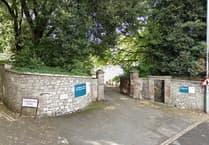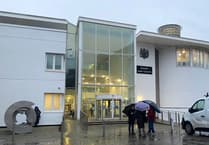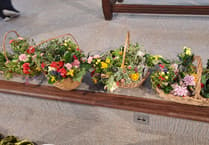MEMBERS of Okehampton Beekeepers enjoyed a film show for their December meeting, the third of the winter season.
Vice Chair, Simon O’Sullivan provided and set up the film, The Monk and the Honeybee, which is a tribute to the life and work of Brother Adam, arguably the foremost Queen Bee breeder of the 20th century.
The meeting was well-attended with 33 members present and began with chair, Marian Minton, conducting a quick show of hands survey of members’ beekeeping experiences in the 2015 season. Members were asked if they had gathered good honey harvests in terms of average yield per colony. Autumn losses to wasp attack were also requested and also instances of unmated or poorly mated queens.
The film followed a chronological biography of Brother Adam, starting off with his first arrival at Buckfast Abbey at the age of 12 in 1910. The Abbey was then just a building site, as the monks were in the process of rebuilding the original ruins.
Life must have been fairly Spartan and the young Adam was initially very homesick for his native South Germany. His initial duties on reaching maturity were stone masonry but he was soon re-assigned to the Abbey apiary.
This coincided with the onslaught of “Isle of Wight” disease (probably Acarine) which practically eliminated the native British black bee, requiring urgent replacement of stocks. These were initially the lighter coloured Italian bees, which Brother Adam considered to be more prolific and less aggressive than their native counterparts.
The film included some lovely footage of beekeeper volunteers taking colonies from the Buckfast apiary in August to the heather at 500m altitude on Dartmoor, towed by an old Massey Ferguson.
This trip needed to be made at 5am in the morning, before the Buckfast bees had woken up. Brother Adam used the isolation of an out-apiary at high altitude on Dartmoor as a method of controlling his Queen breeding programme.
The film showed shots of the breeding programme itself, showing grafting of young larvae into Queen cups to make dozens of queens from a single frame in the feeder colony. These ripe queen cells are then transferred to mini nuclei and moved out to the isolated mating apiary on Dartmoor.
Throughout his life Brother Adam maintained links with his family and friends in Southern Germany, and the film included some beautiful scenes showing beekeeping around his home town, Mittelbiberach.
It ended with a truly remarkable account of Brother Adam’s expedition to recover the Mt. Kilimanjaro black queen bee from Tanzania.
He was then in his 90th year and the film included ascending the mountain to investigate bees in log hives at nearly 3,000m altitude.
The evening’s entertainment finished with mulled wine and mince pies, Thanks go to Annie, Suzanne and Janet for organising these refreshments.
WP



